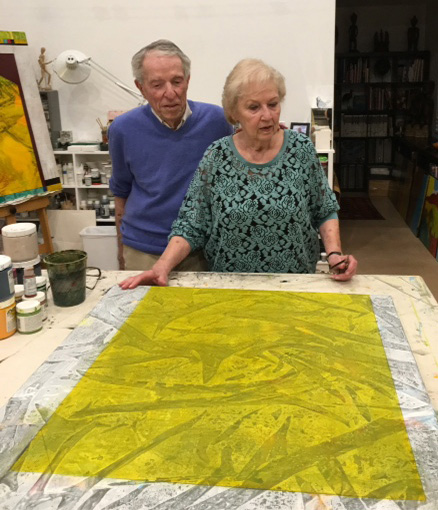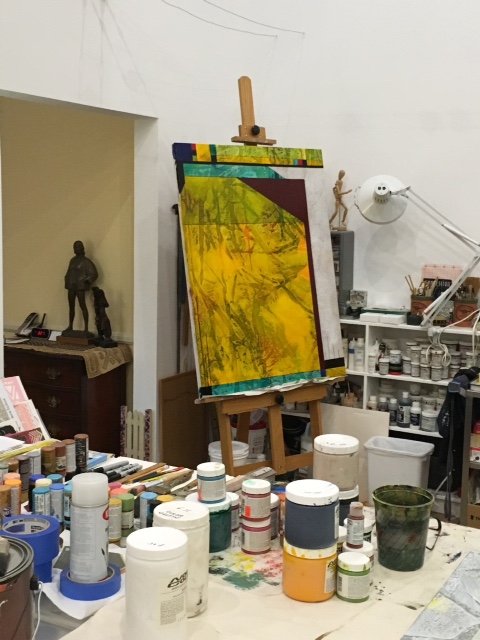About Lois Ramirez

Lois Ramirez grew up in a steel-mill family in a small Indiana town. After high school, she had an opportuity to take art classes in Chicago, but her anxiety about taking the train from Hammond to the Windy City prevented her from pursuing an artist career. She didn’t pick up a brush again until the early 80’s, after she had raised her family and her three daughters left the nest.
Since then, Ramirez has been a fixture in the Valley art scene, producing an evolving body of work that includes assemblage, collage, drawing and painting. The preponderance of Ramirez’s works are composition-driven abstracts that are not premeditated to any great extent. And she is drawn to imperfection: warm, blended colors; asymmetry; abstraction; hybrid images. Ramirez rejects all things pristine.
Central to her work, regardless of medium, is strong color, design over message, and small scale works due entirely to practicality. Another practicality: her impatience requires that she works exclusively in water-based media.
 Her most important artistic influences are painters. In her work you will find traces of Diebenkorn for his division of space; Gaugin for his use of shape and color; Modigliani for his simplified and elongated treatment of the figure. Working painter and collage artist, Fred Otnes, inspires her work with his layering of ideas and images and his pleasing distortion of shapes. Other than choice pieces created by artists who are Ramirez’s friends or family members, her personal art collection contains West African sculpture with a focus on the Ivory Coast.
Her most important artistic influences are painters. In her work you will find traces of Diebenkorn for his division of space; Gaugin for his use of shape and color; Modigliani for his simplified and elongated treatment of the figure. Working painter and collage artist, Fred Otnes, inspires her work with his layering of ideas and images and his pleasing distortion of shapes. Other than choice pieces created by artists who are Ramirez’s friends or family members, her personal art collection contains West African sculpture with a focus on the Ivory Coast.
There are five major series embedded in Ramirez’s extensive body of work. Her current collection on exhibit, Lay of the Land, consists of 50 acrylic paintings on canvas depicting abstract landscapes, some urban, some rural, some interior scapes. Like all her previous work, color is central. In explaining her process for this latest series, Ramirez describes herself as more of a problem-solver than a visionary:
As I am working on a painting, I use up the color on my brush on a separate blank canvas. That new canvas then becomes the beginning of the next painting. A thick layer of gesso is applied over the entire surface, and then on top of that a sheet of plastic. Once it is dry, the plastic is removed and I am left with shapes and a little color. It is only at that point that I map out a composition over the swashes of color, sticking closely to some self-imposed rules about juxtaposition and size of areas and shapes. Then I choose a main color, which drives the rest of the color decisions. Color wise, the painting unfolds; I don’t plan it in advance. On larger works, there can be as many as a dozen layers of paint. I work and re-work; discovering and addressing problems with structure or color until the painting resolves itself into a harmonious state.
Not surprisingly, Ramirez doesn’t name a painting until it is complete. While she likes to create a series of works, she is usually not able to replicate an individual piece of work. Too much of the process is about the unique unfolding of a painting in the moment. Even if she has a preconceived vision, it doesn’t manifest itself as planned. Intuition and happenstance take over. Her process is wholly intended to encourage happy accidents.
Currently, Ramirez is contemplating her next series; possibly incorporating collage into painting. Why? To add even more dimension, layering, and imperfection, which to her is the definition of interesting.
